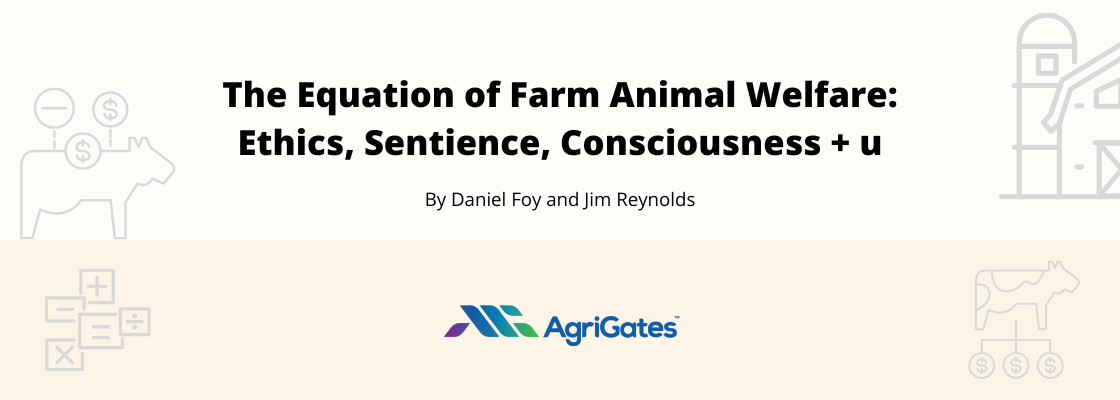By Daniel Foy and Jim Reynolds, AgriGates
In food animal agriculture, it’s easy to talk about productivity, efficiency, or data. Harder, but more vital, is the discussion about how ethics, consciousness, and sentience interact with the economic systems that shape animal lives.
On a recent episode of the LiveStack Podcast, Dr. Jim Reynolds and I unpacked a provocative thought: what if we could model the relationship between these four forces, Ethics, Consciousness, Sentience, and Money, not just as abstract values but as interdependent variables in an equation that defines the state of welfare in animal systems?
Let’s break them down:
- Ethics are our values, and those values have valence, a spectrum from harm to benefit. Ethics aren’t static; they evolve, shift with context, and are heavily influenced by our upbringings and economic systems. On farms, ethics determine what actions we choose to take.
- Consciousness is the ungraspable “something-it-is-like-to-be.” We still don’t have a concrete definition, yet it underpins everything, from fear to joy, in both humans and animals. It is the seat of awareness, and thus, of welfare.
- Sentience is the capacity to feel, anticipate, and remember. A pregnant cow doesn’t just experience gestation physiologically; she anticipates birth. A bird remembers building a nest. Sentience implies intelligence, agency, and expectation.
- Money doesn’t just fund farms, it shapes how we justify suffering, accelerate innovation, or stall it. Capitalism, subsidies, and cost-benefit decisions actively affect how ethics, consciousness, and sentience are allowed to manifest on farms.
So, what’s the equation? We might metaphorically express it like this:
Welfare Value = f (Ethics, Sentience, Consciousness) + Money Bias
Conceptual Definition
f could represent the interpretation framework or measurement method used to convert those complex qualities (Ethics, Sentience, Consciousness) into a meaningful welfare score or decision impact.
This could include Sensor inputs (e.g., heart rate, movement, nesting behavior), Observer assessments, AI/ML models interpreting behavior, Valence scores or welfare indexes.
Possible Expansions
If we tried to define f more explicitly, it might look like:
f(x) = Valence(x) × Visibility(x) × Priority(x)
Where:
- Valence(x) = How positive or negative the experience is (e.g., pain vs. comfort)
- Visibility(x) = How detectable or observable it is in current systems
- Priority(x) = How much weight society or stakeholders place on it (ethically or legally)
This isn’t just philosophy. If we’re building sensors, AI systems, and welfare protocols, these are the components that should be guiding how we measure “good” outcomes.
And until we fully understand them, and invest in building the standards to capture them, we’ll keep mistaking production for welfare.
A Note on Modeling: Translating Metaphor to Measurement
Some readers may wonder: Is this really an equation, or just a metaphor?
The short answer is, it’s both.
In the same way that machine learning models use a function f(X) to convert feature inputs into an outcome, we can treat ethics, sentience, and consciousness as key inputs into a welfare value function. What’s important is not the arithmetic, but the relationship:
Welfare Value = f (Ethics, Sentience, Consciousness) + u
Where:
- f(…) represents the interpretation framework (which could be a combination of AI/ML models and sensory data inputs, human assessments, valence scores, or welfare protocols)
- u captures the non-modeled effects, things like economic policies, public perception, or climate factors, Economic costs that affect welfare but aren’t part of our formal model
This mirrors a common equation in predictive modeling:
y = f (x) + u
Where:
- y is the target (welfare)
- x is the set of input variables (ethics, sentience, consciousness)
- u is the unmodeled or residual influences
This helps move from conceptual clarity to systemic utility, making ethical models not just theoretical but useful for design, auditing, and improvement.

